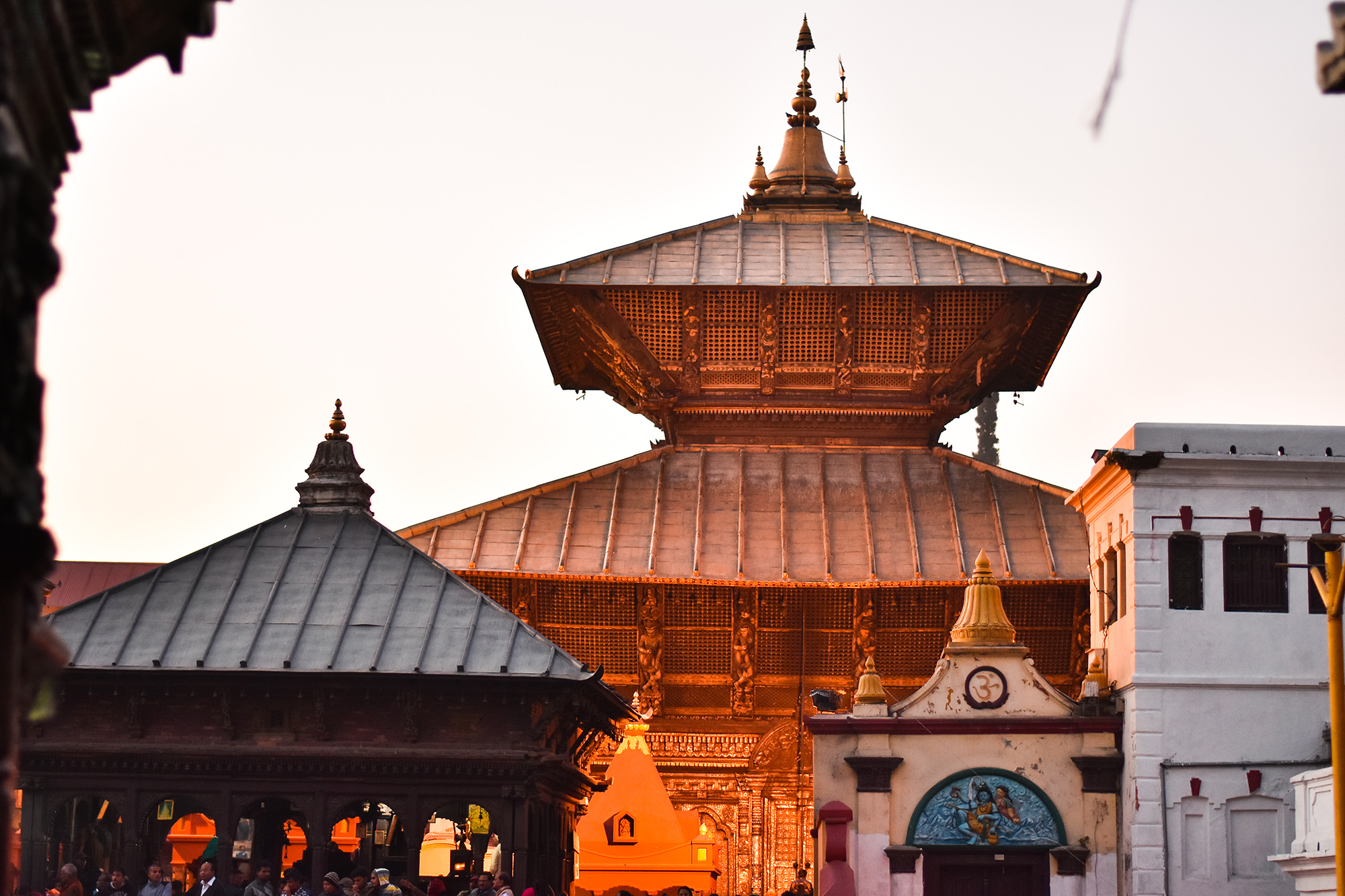Pashupatinath Temple History
According to mythology, Gods sometimes disguised themselves as animals, birds, or men in order to take a break from their cosmic duties and enjoy life on Earth. On one occasion, Lord Shiva and Goddess Parvati came to Earth in the form of deer. They landed in Nepal’s forest regions and were fascinated by the glory of the land. When they arrived at the banks of the Bagmati River, they decided to stay for eternity. When the other gods and goddesses decided to bring them to their cosmic work, Lord Shiva refused to come. Gods had no other choice than to use force to bring them back. Lord Shiva, disguised as a deer, lost one of his antlers during this terrible fight.
This antler was worshipped as the first lingam at Pashupatinath in Kathmandu, Nepal. The lingam is believed to have been retrieved by Mother Earth and had been lost for years until one day, Kamadhenu, a deity in the form of a cow, came down to earth, watered the soil around the region with her milk, and recovered the lingam. The locals retrieved the lingam and constructed a wooden temple. The temple is believed to have existed on the site since 400 AD.
According to an inscription discovered inside the premises, the wooden temple thrived during the year 800 AD. During that period, Supusapa Deva king built the five-Storey structure over the temple out of wood. In the fifth century, the temple was reconstructed. Ananta Malla King added a beautiful design to the temple in the 13th century. It was later destroyed by the passage of time and termites. The current structure was constructed in the 17th century with 492 temples in addition to the main temple.
Pashupatinath Temple visiting Timings.
Pashupatinath temple has four entrance gates of which the primary one is located on the western side. The other entrances are only opened during festivals and special events.
- The inner temple area is open daily from 4 AM to 9 PM.
- Devotees can visit the lingam from 5 AM to 12 PM as well as from 5 PM to 7 PM.
- Timing of Abhishekam: 9 AM to 11 AM.
Birth, death, and sex are all essential parts of life.
This temple represents an ancient Hindu concept that states that death should not be feared, and sex should not be ridiculed. As a result, there is a ritual cremation ground extremely close to the temple, as well as sensual artworks on the temple’s roof.
Interesting facts about Pashupatinath Temple
- The temple’s structure holds gold on the roof and tower. The doors are coated with silver sheets, and the large bull statue inside the temple is made of gold as well.
- When compared to other Shiv mandirs in Nepal, this lingam temple is one-of-a-kind. The lingam has four faces, and the deity is a five-sided construction, with the top section known as Ishan.
- This is one of the few temples in the world that restricts entrance to the main temple and inner courtyard allows Hindus only.
- It is one of the most recommended places in Nepal for sightseeing.
- The majority of the paintings in the temple are made of gold.
- According to Hindu beliefs, if a soul commits countless sins, it would not be born as a human in the future life. Instead, it will take the form of an animal. The blessing from the lingam in the temple is believed to wash away all your sins, and you will be reborn as a human in your future birth.
- The banks of the Bagmati River are now used for open-air cremations. During your visit, you might come across burning corpses.
- In 2015, a 7.8 magnitude earthquake struck Nepal, destroying structures and costing human lives. Except for a few cracks, the ancient Pashupatinath temple remained unharmed.
